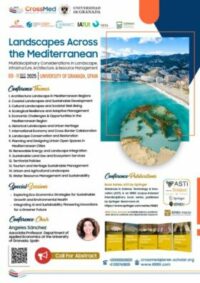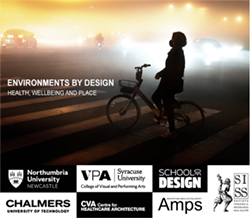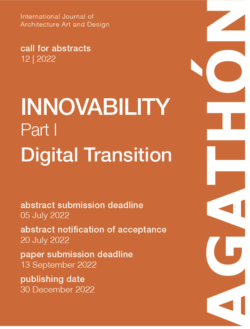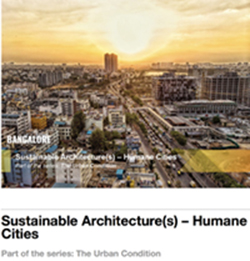ISSN (online): 2412-3811
Call of the Journal:
- Advances in the Management and Application of Construction and Demolition Waste
- Agricultural Infrastructure
- Application of Artificial Intelligence to Model the Behavior of Infrastructure
- Application of Machine Learning and Artificial Intelligence in NDE and Structural Health Monitoring of Civil Infrastructures
- Big Data Analysis and Visualization in Transport Infrastructure | Challenges for Operations, Control, and Planning
- Critical Infrastructure Resilience Facing Extreme Weather Events
- Designing and Managing the Next Generation of Transportation Infrastructure
- Durability of Concrete Infrastructure
- Innovative Practices into Road Pavement Maintenance Management
- Inspection, Assessment and Retrofit of Transport Infrastructure
- Neural Networks in Land Transport, Vehicle and Railway Engineering
- Non-destructive Testing and Evaluation for Civil Infrastructures
- Pavement Management | Inspection and Life-Cycle Assessment
- Pedestrian and Bicycle Mobility in the Future Cities of the World | Between Adapting Infrastructure and Changing Behavior
- Rail Infrastructures
- Reliability and Durability of Pipelines
- Remote Sensing and Infrastructure Information Models | Methods, Applications and Smart Management of Infrastructure Data
- Research and Developments in Pavements
- Resilient and Smart Transport Infrastructure for Connected and Autonomous Vehicles
- Reusing, Recycling and Repurposing Infrastructure | Components and Construction Materials
- Road and Rail Infrastructures
- Seismic Reliability Assessment and Advances in Structural Modelling
- Selected Papers from the 8th Civil Structural Health Monitoring Workshop
- Smart Infrastructures
- Smart Materials for Sustainable Infrastructures
- Smart, Sustainable and Resilient Infrastructures
- Structural Assessment and Health Monitoring of Infrastructures
- Structural Health Monitoring of Civil Infrastructures
- Structural Performances of Bridges
- Sustainability of Building Materials and Structures
- Sustainability of Concrete Infrastructures | New Applications, Monitoring and Retrofitting
- Ultra-High Performance Concrete (UHPC)
- Underground Infrastructure Engineering
Jan
2021
Feb
2021
Numerical simulation is commonly used to assess structural seismic risk, notwithstanding its high computational burden and the limitations of stochastic models used to generate synthetic ground motions. In the effort to overcome these difficulties, the last decades witnessed a considerable amount of research focussed on the development of approximate affordable alternatives, which are conditional on a seismic intensity measure (IM) and rely on the hazard-fragility split of risk. Contributions focussing on one of these classes of methods, or on the comparison between them, are welcome. Submission of papers dealing with the treatment of uncertainties is also encouraged. It is known that the seismic vulnerability and risk assessment of structures is affected by several sources of uncertainties, which can be categorised as either aleatory or epistemic and should be properly taken into account. For the analyst, the final goal of the treatment of uncertainties should be to provide the confidence in the estimate and quantify the contribution of the adopted models and parameters to the total output uncertainty. The scope of this Special Issue also extends to exploring the impact of recent structural modelling advancements on fragility functions or seismic risk assessment. Amongst such modelling refinements, the following non-exhaustive examples are cited: dynamic nonlinear soil-structure interaction (SSI), flexure-axial-shear interaction, explicit modelling of progressive collapse and debris accumulation. To summarise, this Special Issue will include contributions whose topics fall in the general framework of seismic reliability analysis of structures and advanced structural modelling. Both state-of-the-art papers and original research contributions are welcome.
Topics of interest include, but are not limited to, the following: Probabilistic methods (simulation-based, IM-based) for seismic risk assessment of structures, the latter including reinforced concrete, steel, masonry, precast buildings and steel storage racks; Treatment and sensitivity of uncertainties; Nonlinear modelling of structures; Ground motion selection methods; Stochastic models for artificial record generation; Physics-based models for synthetic record generation; Derivation of hazard and fragility curves; Dynamic SSI modelling, encompassing linear substructure approach, direct approach with a finite element soil-block, hybrid methods (e.g., employing a nonlinear macro-element); Comparative assessment of SSI models in affecting seismic risk.
Keywords: Seismic risk assessment; Nonlinear dynamic analysis; Treatment of uncertainties; Numerical simulation; IM-based methods; Record selection; Fragility functions; Dynamic Soil-Structure Interaction (SSI); Soil nonlinearity; Progressive collapse.
Seismic Reliability Assessment and Advances in Structural Modelling
Numerical simulation is commonly used to assess structural seismic risk, notwithstanding its high computational burden and the limitations of stochastic models used to generate synthetic ground motions. In the effort to overcome these difficulties, the last decades witnessed a considerable amount of research focussed on the development of approximate affordable alternatives, which are conditional on a seismic intensity measure (IM) and rely on the hazard-fragility split of risk. Contributions focussing on one of these classes of methods, or on the comparison between them, are welcome. Submission of papers dealing with the treatment of uncertainties is also encouraged. It is known that the seismic vulnerability and risk assessment of structures is affected by several sources of uncertainties, which can be categorised as either aleatory or epistemic and should be properly taken into account. For the analyst, the final goal of the treatment of uncertainties should be to provide the confidence in the estimate and quantify the contribution of the adopted models and parameters to the total output uncertainty. The scope of this Special Issue also extends to exploring the impact of recent structural modelling advancements on fragility functions or seismic risk assessment. Amongst such modelling refinements, the following non-exhaustive examples are cited: dynamic nonlinear soil-structure interaction (SSI), flexure-axial-shear interaction, explicit modelling of progressive collapse and debris accumulation. To summarise, this Special Issue will include contributions whose topics fall in the general framework of seismic reliability analysis of structures and advanced structural modelling. Both state-of-the-art papers and original research contributions are welcome.
Topics of interest include, but are not limited to, the following: Probabilistic methods (simulation-based, IM-based) for seismic risk assessment of structures, the latter including reinforced concrete, steel, masonry, precast buildings and steel storage racks; Treatment and sensitivity of uncertainties; Nonlinear modelling of structures; Ground motion selection methods; Stochastic models for artificial record generation; Physics-based models for synthetic record generation; Derivation of hazard and fragility curves; Dynamic SSI modelling, encompassing linear substructure approach, direct approach with a finite element soil-block, hybrid methods (e.g., employing a nonlinear macro-element); Comparative assessment of SSI models in affecting seismic risk.
Keywords: Seismic risk assessment; Nonlinear dynamic analysis; Treatment of uncertainties; Numerical simulation; IM-based methods; Record selection; Fragility functions; Dynamic Soil-Structure Interaction (SSI); Soil nonlinearity; Progressive collapse.
DOAJ, Inspec (IET), Scopus (Elsevier), CLOCKSS (Digital Archive), e-Helvetica (Swiss National Library Digital Archive), Google Scholar, J-Gate (Informatics India), ProQuest Central (ProQuest), Science In Context (Gale/Cengage Learning).
Info at: www.mdpi.com/journal/infrastructures/apc
Guest Editor
Dr. Francesco Cavalieri










